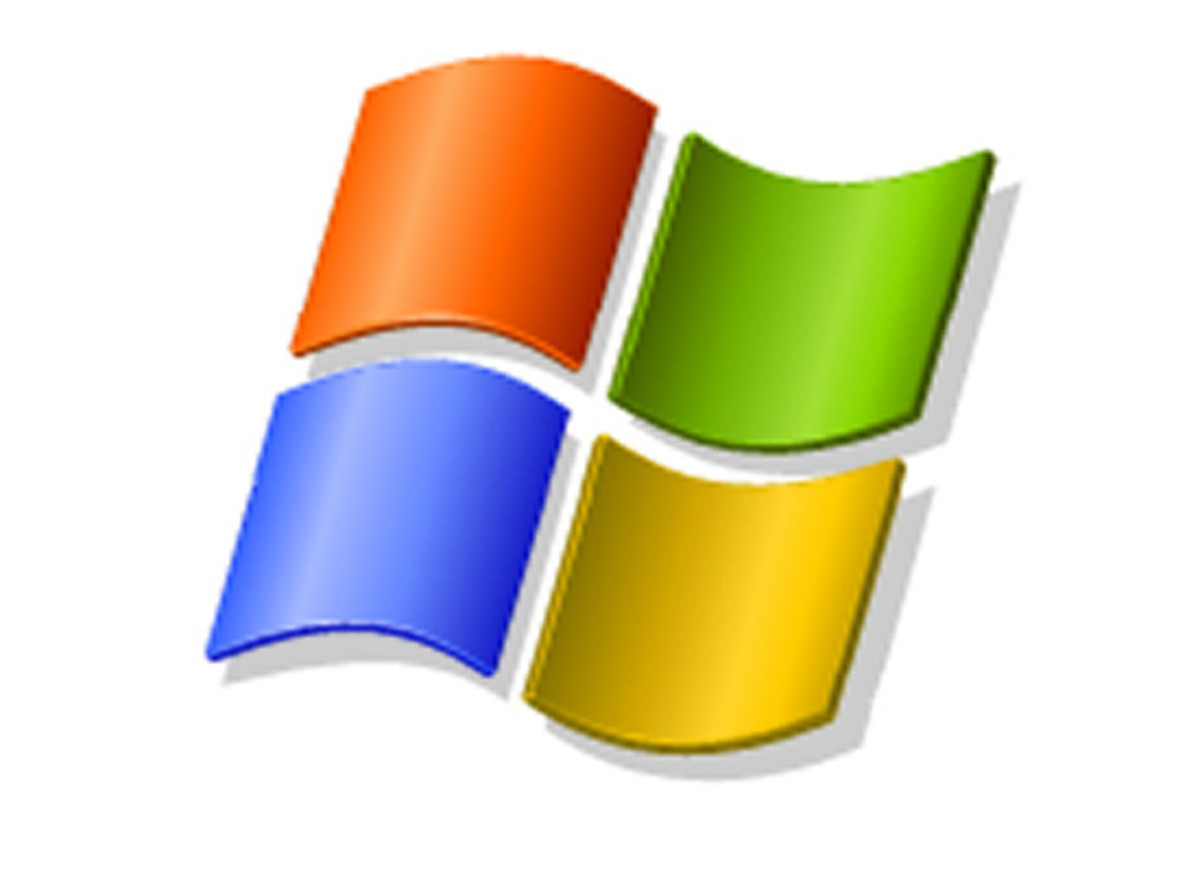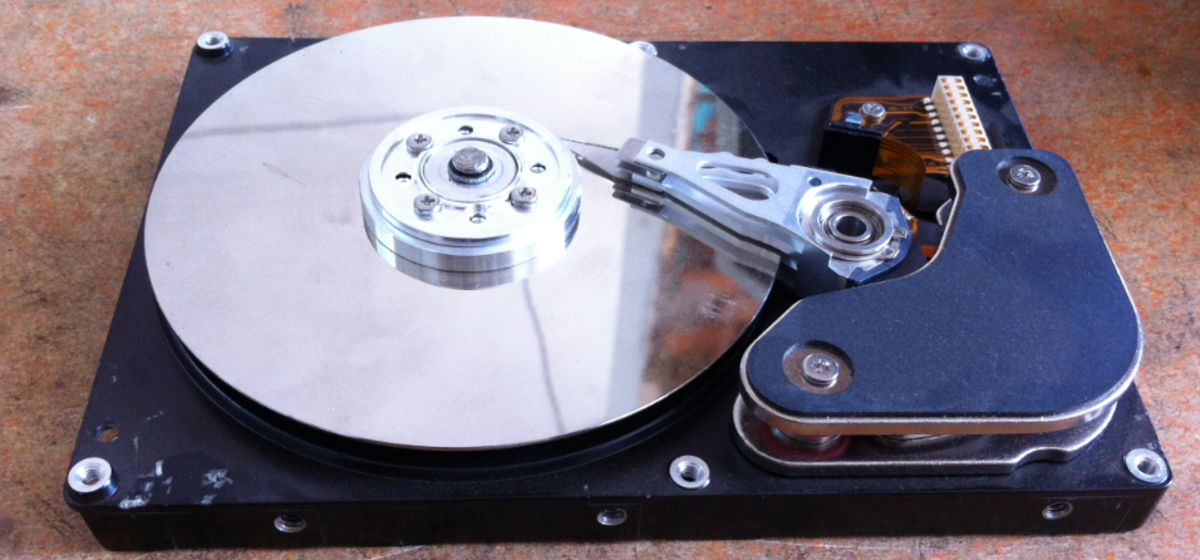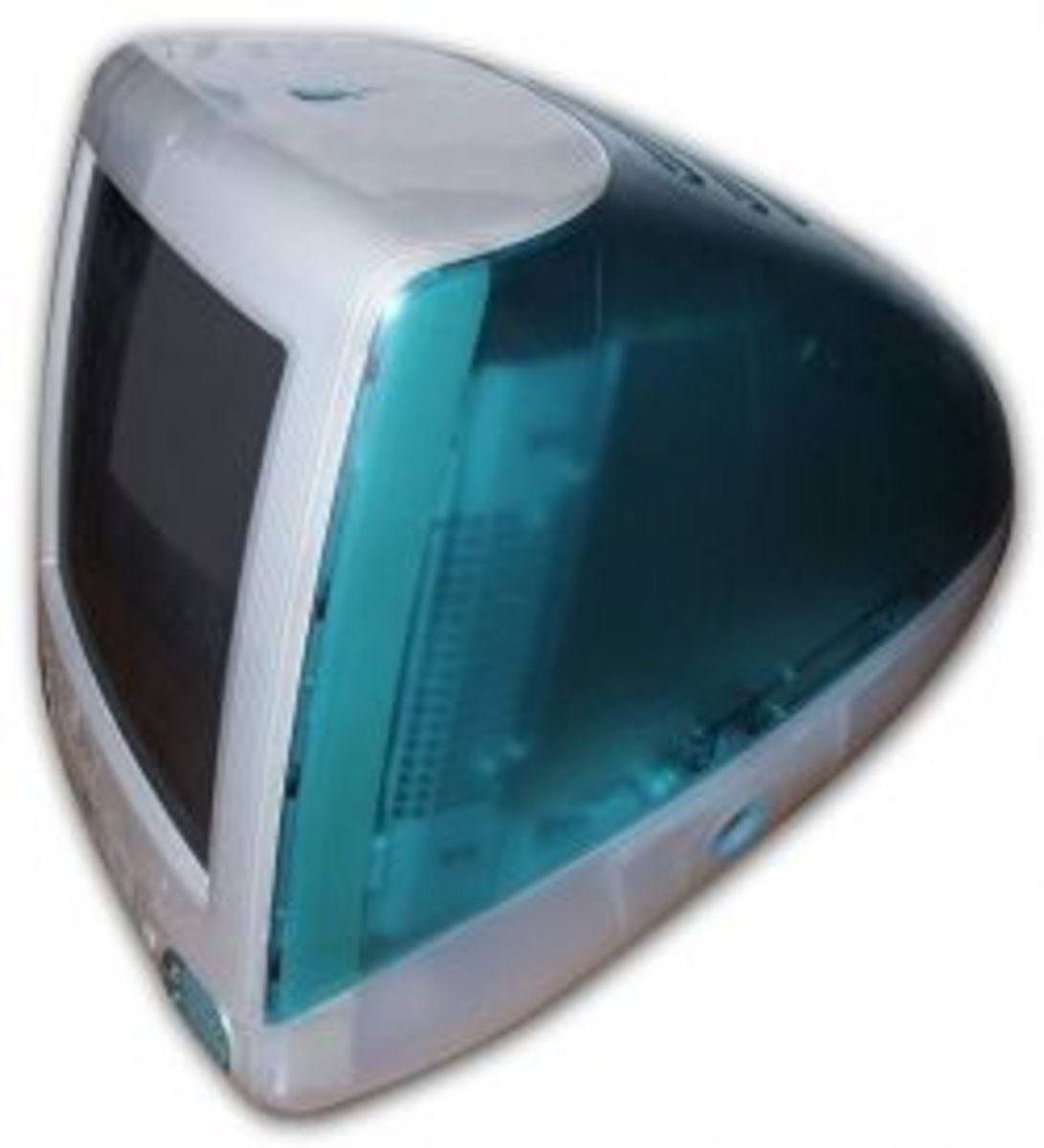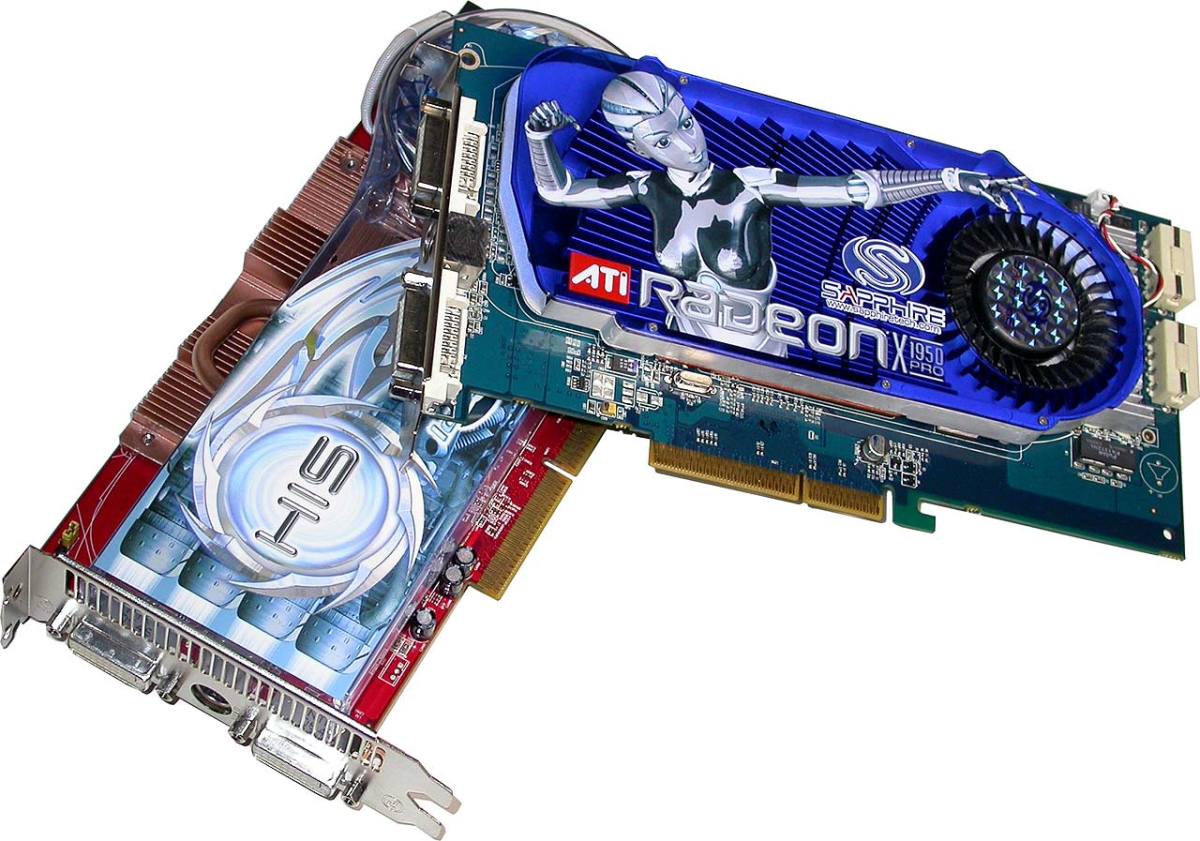- HubPages»
- Technology»
- Computers & Software»
- Computer Hardware
Dual hard drive laptop - optical drive to hard drive conversion
My second hard drive caddy, with my SSD installed and ready to go
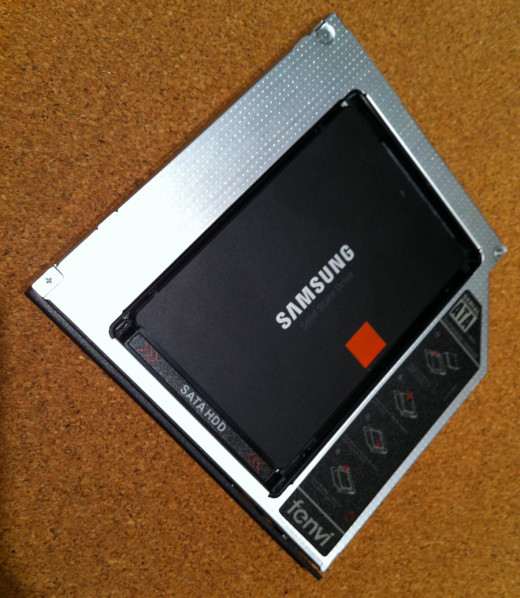
Dual Hard Drive Laptops are undeniably awesome
By removing the optical drive (aka CD or DVD drive) from your laptop and replacing it with a second hard drive, you can double your storage capacity, or even better, add a secondary Solid State Drive (SSD) to gain a giant boost in speed. Best of all, no permanent modification to your Macbook or laptop is required, thanks to easily available second hard drive caddy, available on Amazon and Ebay. I recently did this to my Macbook Pro, and I can attest that a dual hard drive laptop is the only way to go.
After updating my 2009 Macbook Pro to the latest Mac OS 8, Mountain Lion, I noticed a slight drop in the overall speed of my computer. Opening applications seemed to take longer than before, and I seemed to get a lot of “spinning wheels”. After realizing I hadn’t used my optical drive in a year, I decided to replace my optical drive with a hard drive. The optical drive to hard drive conversion went perfectly, and the 120GB SSD I added made my laptop feel as fast as new. Or faster.
The Basic Idea: Laptop Optical Drive to Hard Drive Conversion
Thanks to the shift in the past few years towards cloud technology, optical drives (CD / DVD drives) are rapidly becoming obsolete. Personally, I can’t remember the last time I put a DVD in my laptop - for all I know my optical drive could be broken, or one of my kids could have filled it with peanut butter.
The optical drive presents an opportunity. Since the optical drive connector connect to a hard drive (with the help of a hard drive caddy - more on that later), a second hard drive can be placed inside your laptop, in the place where the optical drive currently rests. This could allow you to double the storage space of your laptop - maybe two 500gb laptop drives, for instance. Or, it could allow you to install an SSD alongside your regular hard drive. By moving your operating system files and program / application files to the secondary SSD, you will gain a giant performance increase. Before I had an SSD, Photoshop took about 40 seconds to open, from the time I clicked it’s icon to the time I could start working on a document. Now that my operating system and applications are on my secondary SSD, Photoshop takes 4 seconds to open. That’s right, 4 seconds. As the SSD movement has proven, a traditional hard drive is a huge bottleneck for a computer.
Although your operating system and application files will be on the secondary SSD hard drive, all your other data - photos, music, documents, etc, can still be stored on your original laptop hard drive. In this way, you don’t need an expensive large capacity SSD hard drive - a reasonably priced 60GB or 120GB SSD hard drive should suffice.
To install the second hard drive in place of the optical drive, a special caddy can be used. These optical drive hard drive caddys are designed specifically to securely hold a laptop sized SSD drive. A connector built into the second hard drive caddy is designed to plug into the SSD second hard drive connector. The second hard drive caddy is also designed to fit exactly in the space that the laptop optical drive normally occupies.
My Macbook Pro second hard drive caddy before installing the second SSD hard drive
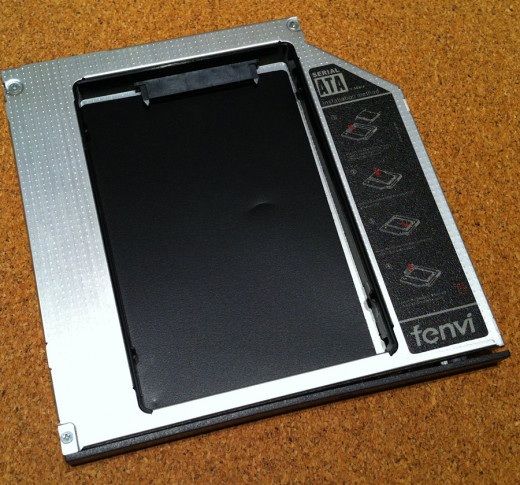
How to choose the right Caddy
Choosing the right caddy for your laptop is important. Fortunately, finding the right optical drive hard drive caddy is easy on Amazon and Ebay, where a caddy can be found for most laptop makes and models. Head over to Amazon.com and search for your make and model of laptop, plus the words “second hard drive caddy”. Chances are you’ll find what you need in the first result. However, be sure to try to find a few comparisons to ensure you get the lowest price. Also, don’t forget to check the shipping charges to your region before making the purchase.
Find a hard drive caddy for your laptop
Choosing the right SSD Hard Drive
Since SSD Hard drives (Solid State Hard Drives) are still relatively new technology, buying a drive big enough to hold all your apps, photos, music, etc, can be expensive. However, you can use a relatively small SSD hard drive, for example 120GB, and only use it for your operating system, and apps. This way, you will maximize the speed boost by having your applications run much faster, and your personal data, which is accessed far more rarely, can remain on a traditional, larger hard drive.
How to format the new SSD before installation
It is best to format your new SSD hard drive before you replace the cd drive with the hard drive. This way, you can easily copy over your operating system and apps from your existing hard drive. To do this, you should use an external hard drive enclosure. The exact type will vary depending on your laptop, but most laptops, both Mac, Windows and Linux, will use a 2.5” SATA hard drive. After installing your new second hard drive in the external hard drive enclosure, connect it to your laptop.
Exact instructions on how to copy your operating system and applications to your new SSD second hard drive vary depending on whether you use Mac, Windows or Linux. Below are instructions for each system:
Mac: How to clone hard drive to SSD
Windows: How to migrate to SSD
Ubuntu Linux: How to migrate to SSD
How to install second hard drive caddy on a Macbook pro
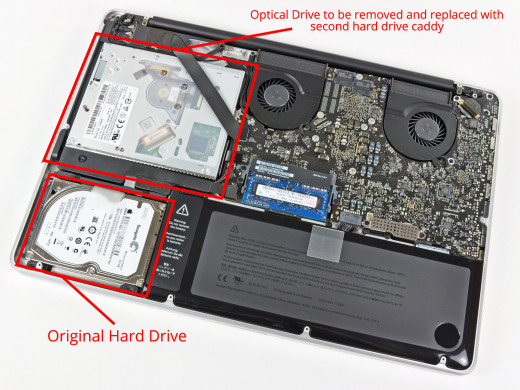
How to install second hard drive caddy
Removing your optical drive, and installing the SSD drive, is not as complicated as it sounds. For my Macbook Pro, the process involved removing the battery (it just pops out), removing about 8 screws, and lifting off the aluminum panel that makes the bottom of the laptop.
Installation instructions are different for each model of laptop. Below are links to instructions for how to replace your optical drive with a hard drive, for common laptop models. If your laptop is not listed here, try doing a Google search for “Replace CD drive with hard drive” and the name of your laptop model.
Second Hard Drive Caddy Installation Instructions - All Macbook, Macbook Pro, Mac Mini
Laptop second hard drive installation - various laptop models including Dell
Video Tutorial - how to replace optical drive with hard drive
How to convert your old optical drive to an external CD drive
If you’ve followed this far, you can tell that adding a second SSD hard drive to your laptop is an easy way to get a major speed boost. But there is one bonus. The optical drive that you removed from your laptop can easily be converted to a standalone, USB external optical drive. Using a SATA CD/DVD Optical Drive Enclosure (readily available on Amazon and Ebay), your optical drive can still be connected to your laptop and used, for that one time a year you need to burn a CD or watch a DVD movie.


